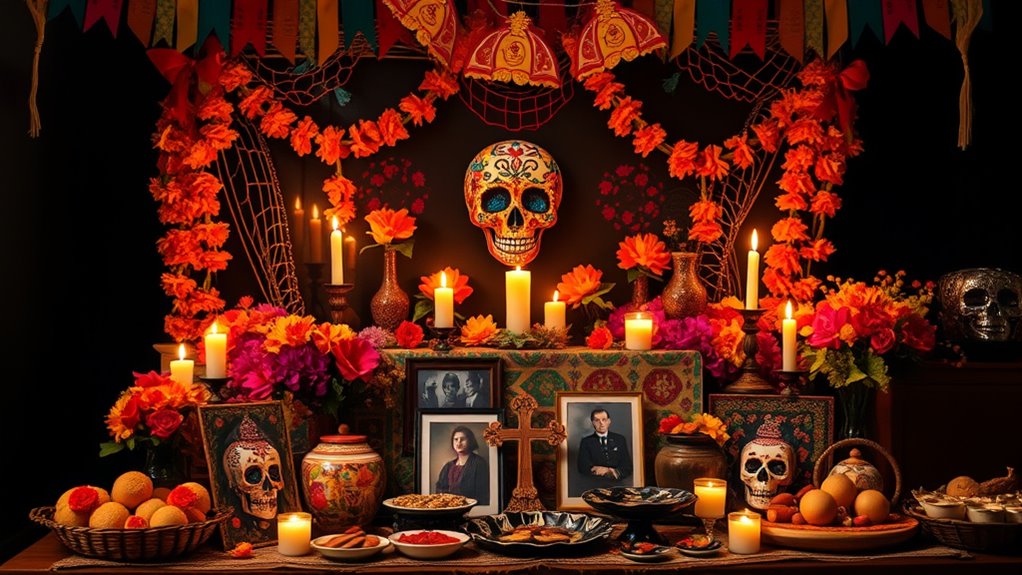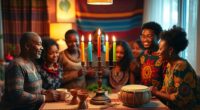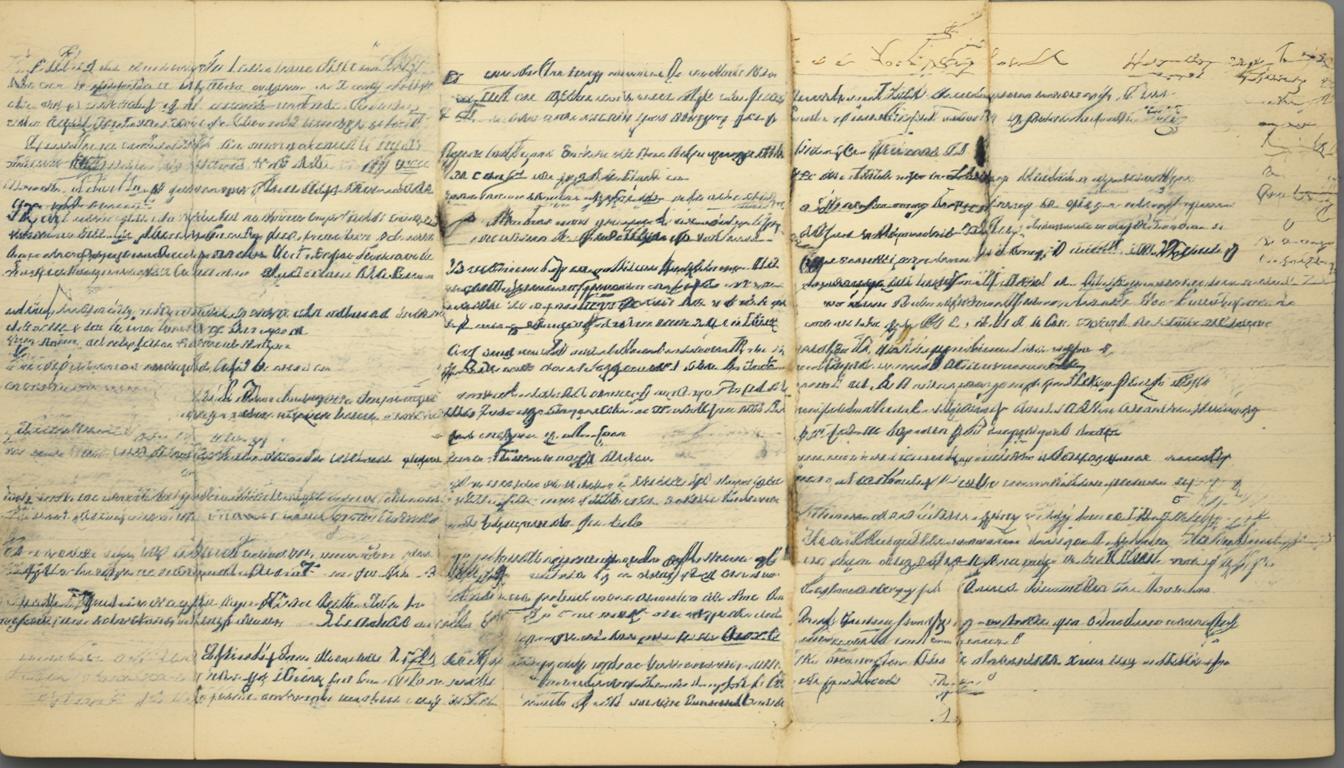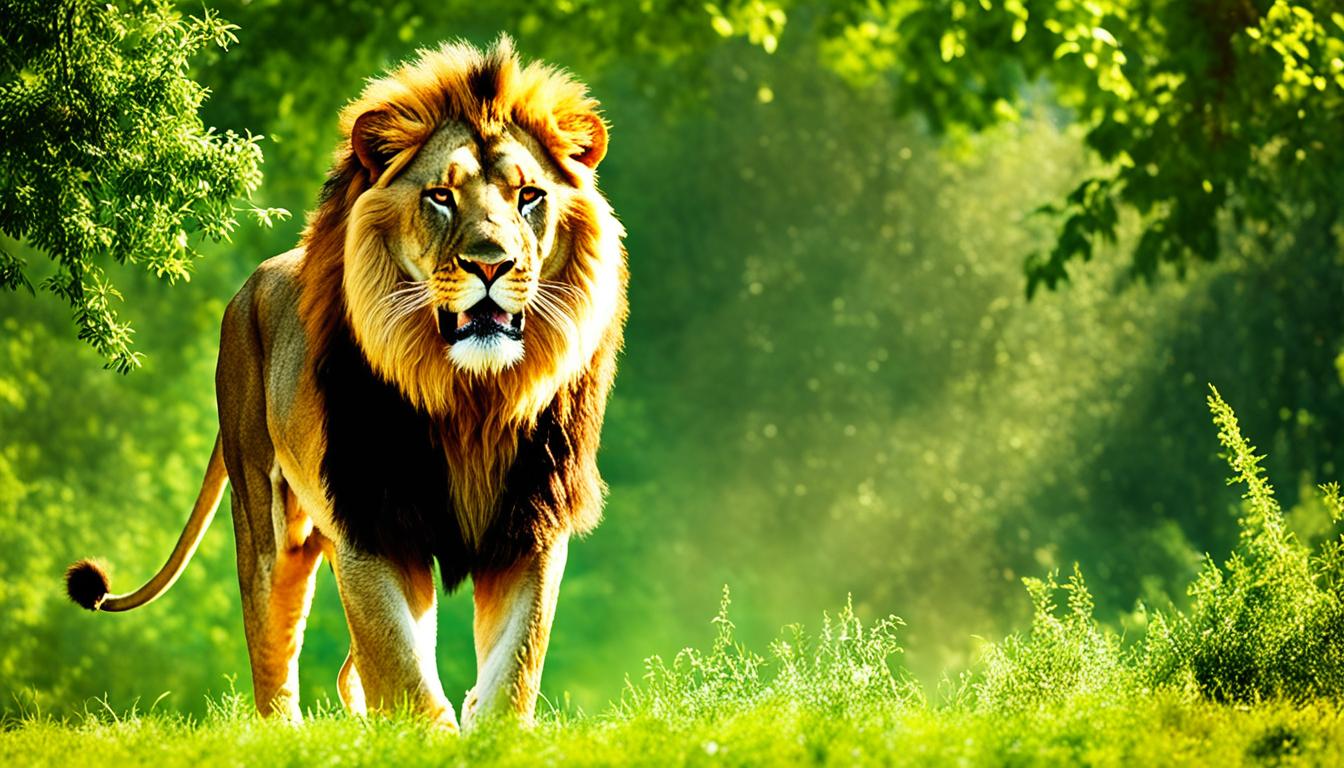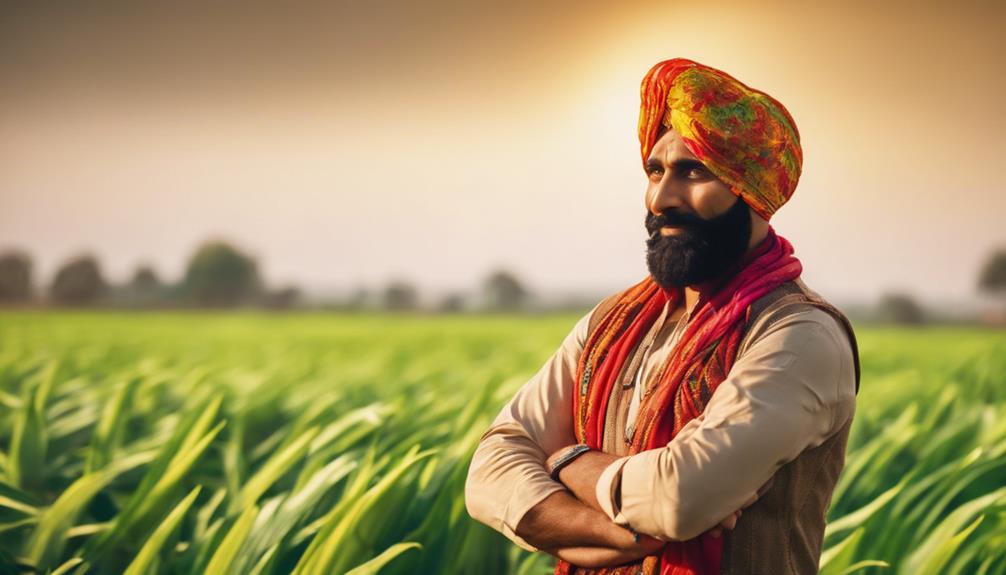To honor your ancestors during Day of the Dead, you create meaningful altars that blend vibrant symbolism with personal memories and traditional elements. Include photos, belongings, and favorite foods, like sugar skulls and pan de muerto, which symbolize life’s cycle. Candles, marigolds, papel picado, and incense guide spirits and celebrate their lives. This lively, heartfelt display keeps their stories alive and fosters a deep connection. If you explore further, you’ll uncover even more ways to craft a heartfelt altar.
Key Takeaways
- Creating personalized altars (ofrendas) can celebrate loved ones and attract customers by emphasizing cultural authenticity.
- Incorporating traditional elements like marigolds, sugar skulls, and papel picado enhances visual appeal and cultural significance.
- Offering workshops or products related to Day of the Dead crafts and foods can boost engagement and sales.
- Using storytelling to share the history and meaning behind the altars builds emotional connections with customers.
- Promoting the celebration as a vibrant, respectful cultural experience can attract diverse audiences and increase business opportunities.
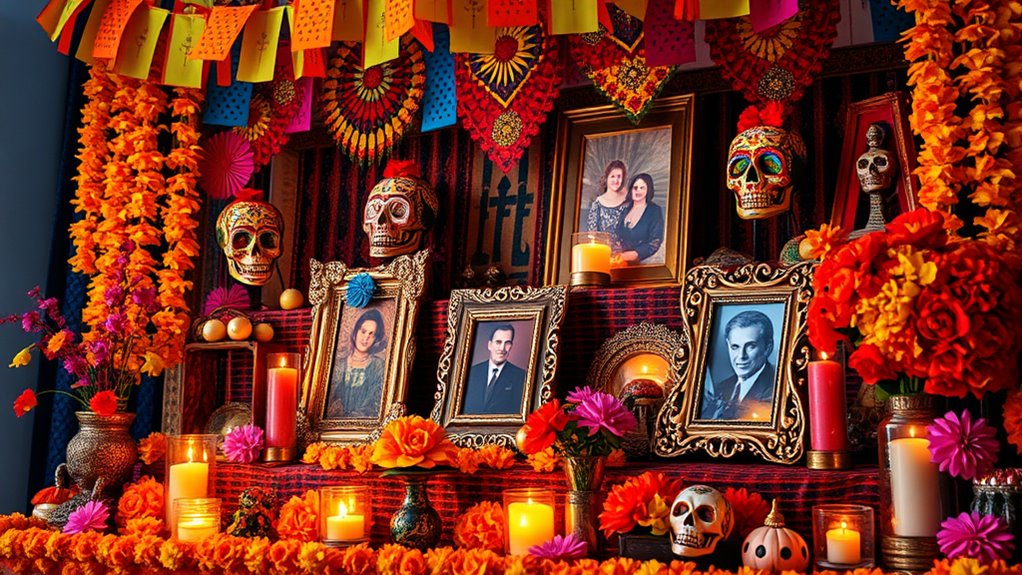
Have you ever wondered how different cultures celebrate honoring their loved ones who have passed away? One vibrant example is the Day of the Dead, a Mexican tradition that transforms grief into colorful remembrance. Central to this celebration are the altars, or ofrendas, which are carefully crafted to honor the spirits of those who have died. Creating these altars involves a deep understanding of cultural traditions, blending symbolism, artistry, and personal memories. You might include photographs of the departed, their favorite belongings, or meaningful mementos to make the altar personal and heartfelt. These altars serve as a bridge between the living and the dead, inviting ancestors to join in the festivities and be remembered fondly.
A key aspect of Day of the Dead is the use of festive foods, which are essential elements of the altars. You’ll see traditional treats like sugar skulls, pan de muerto (a special bread with bone-shaped decorations), and vibrant marigold flowers. These foods are not only delicious but also symbolic. For example, pan de muerto’s circular shape represents the cycle of life and death, while the bright marigolds are believed to guide spirits back to the world of the living with their vivid color and scent. Including these festive foods on the altar is a way to honor the deceased’s favorite flavors and to celebrate their life with joy rather than sorrow.
When you set up a Day of the Dead altar, you’re participating in a ritual that’s rich with meaning and tradition. You might arrange candles to light the way for spirits, place papel picado (colorful paper cutouts) to add a festive touch, and layer on offerings like water, salt, and incense to nourish and purify the spirits during their visit. Each element has a specific purpose, and the act of assembling the altar becomes a personal expression of love and remembrance. The vibrant colors, fragrant foods, and symbolic items all work together to create a lively, welcoming space where ancestors are honored and their stories kept alive.
Frequently Asked Questions
How Do Different Regions Celebrate Day of the Dead Uniquely?
You’ll notice that different regions celebrate the Day of the Dead with unique rituals and customs. For example, in Oaxaca, vibrant parades and intricate sand tapestries are common, while in Michoacán, families build tall, elaborate altars called ofrendas. These regional customs reflect local traditions and history, making each celebration special. You can experience diverse cultural expressions, from colorful costumes to special foods, that highlight the rich heritage of each area.
What Are Traditional Foods Associated With the Altars?
Imagine a feast so vibrant, it could light up the entire sky—that’s what traditional foods on Day of the Dead altars evoke. You’ll find symbolic food offerings like pan de muerto, sweet bread representing the cycle of life, alongside sugar skulls and favorite dishes of the departed. Traditional Mexican cuisine plays a central role, helping honor ancestors with meaningful, flavorful connections to their spirits through these cherished foods.
How Do Altars Vary Between Families and Communities?
You’ll notice that altars vary greatly between families and communities, reflecting unique family traditions and cultural influences. Some include specific photos, favorite foods, or personal mementos, while others might feature different flowers or decorations. These community variations help celebrate shared heritage while honoring individual ancestors. Your own altar might emphasize certain symbols or offerings that resonate with your family’s history, making each display a meaningful expression of remembrance.
What Are Common Symbols Used in Day of the Dead Altars?
You’ll notice common symbols like marigold flowers, which symbolize the fragility of life, and sugar skulls, representing the deceased’s spirit. Candles are essential, signifying light guiding spirits home. Photos personalize the altar, honoring individual loved ones. Decorative elements like papel picado add vibrancy, while offerings of favorite foods and drinks reflect their preferences. These symbols and decorations hold deep meaning, creating a heartfelt tribute that celebrates and remembers those who have passed.
How Can Beginners Start Creating Meaningful Altars at Home?
Thinking of creating a meaningful altar? Start with simple altar decoration ideas—pick photos, favorite foods, and meaningful symbols. Place candles carefully, ensuring they illuminate your loved ones’ memories. Don’t overthink it; authenticity beats perfection. Use vibrant colors and personal touches to make it special. Remember, your effort and love matter more than fancy decorations. Soon, you’ll have a heartfelt tribute that truly honors your ancestors’ spirit.
Conclusion
By creating these vibrant altars, you connect deeply with your ancestors, turning your home into a sacred space of remembrance. As you honor their spirits, you might just discover a bond stronger than time itself—one that spans beyond life and death. Don’t underestimate the power of tradition; it’s a force so mighty it can transform your entire perspective. Embrace the Day of the Dead with sincerity, and watch love and memory illuminate your life like never before.
